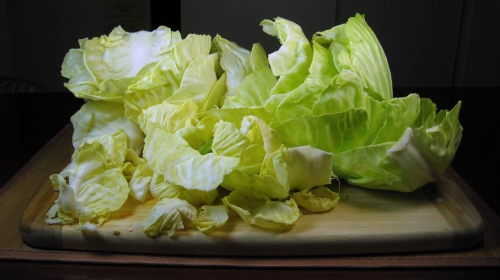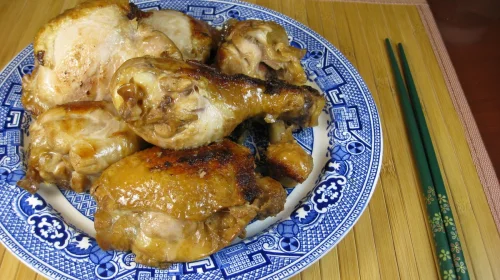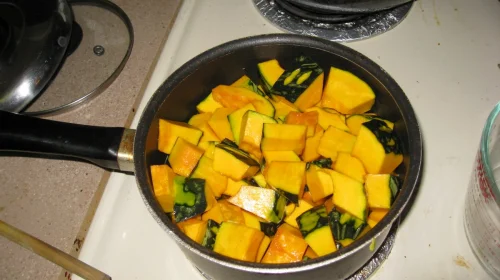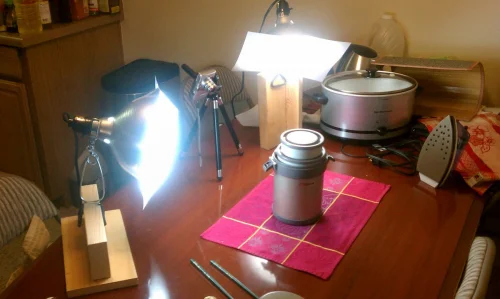As promised, a brief discussion of the cookbooks I use. I have several more great books but they are more focused on meals and dim sum. Dim sum is certainly acceptable bento fair but I find that making it right usually takes longer than I have. Also, dim sum is generally very technique sensitive and it is easy to screw up.
 The Just Bento Cookbook: Everyday Lunches To Go by Makiko Itoh is basically my Bento Bible. Itoh is a globe trotter who has had to learn how to cook traditional Japanese food even when she does not have regular access to traditional ingredients. Because of this, almost all of her recipes provide substitute ingredients where appropriate. In my experience (I have cooked my way through about half of her book) her suggestions are solid. The alternative ingredients might alter the flavor but the final product is still delicious. This book was worth in paltry $11 price for her explanation of how to freeze rice. Growing up, rice was made fresh everyday so I had no idea that you could freeze it. Making rice on Sunday and freezing it in unit-doses is easily the best time saver you will find in this book. The final thing that makes this book awesome is the meal timeline she provides with each full menu. With these timelines you can easily figure out what order you need to prepare things so that they will be ready to be packed when you get done. As a person who has a difficult time making more than one dish at a time, these charts are a life saver.
The Just Bento Cookbook: Everyday Lunches To Go by Makiko Itoh is basically my Bento Bible. Itoh is a globe trotter who has had to learn how to cook traditional Japanese food even when she does not have regular access to traditional ingredients. Because of this, almost all of her recipes provide substitute ingredients where appropriate. In my experience (I have cooked my way through about half of her book) her suggestions are solid. The alternative ingredients might alter the flavor but the final product is still delicious. This book was worth in paltry $11 price for her explanation of how to freeze rice. Growing up, rice was made fresh everyday so I had no idea that you could freeze it. Making rice on Sunday and freezing it in unit-doses is easily the best time saver you will find in this book. The final thing that makes this book awesome is the meal timeline she provides with each full menu. With these timelines you can easily figure out what order you need to prepare things so that they will be ready to be packed when you get done. As a person who has a difficult time making more than one dish at a time, these charts are a life saver.
 The Steamy Kitchen Cookbook: 101 Asian Recipes Simple Enough for Tonight’s Dinner by Jaden Hair is not a bento book but it is a collection of 101 Asian recipes that (with a couple of stated exceptions) can be cooked in 30 minutes or so. Hair is like me, an Asian-American who grew up eating traditional Asian cooking but never got around to learning the secrets at our mothers knee. In fact, at the time we kinda hated it and wished our parents would just make hamburgers and spaghetti like normal Americans. Then we got older and realized that we craved all those ethnics tastes that you just cannot find on a regular basis. So we rushed back and tried to learn what we should have learned decades ago. The result, in her case, is a series of recipes that stay true to tastes of Asian cooking (her recipes run the gamut from Japanese to Thai) without having to slave over a point of boiling animal parts for three days. Authenticity is sacrificed for speed and ease of cooking but I think that is a fair trade if you get a home cooked meal out of it.
The Steamy Kitchen Cookbook: 101 Asian Recipes Simple Enough for Tonight’s Dinner by Jaden Hair is not a bento book but it is a collection of 101 Asian recipes that (with a couple of stated exceptions) can be cooked in 30 minutes or so. Hair is like me, an Asian-American who grew up eating traditional Asian cooking but never got around to learning the secrets at our mothers knee. In fact, at the time we kinda hated it and wished our parents would just make hamburgers and spaghetti like normal Americans. Then we got older and realized that we craved all those ethnics tastes that you just cannot find on a regular basis. So we rushed back and tried to learn what we should have learned decades ago. The result, in her case, is a series of recipes that stay true to tastes of Asian cooking (her recipes run the gamut from Japanese to Thai) without having to slave over a point of boiling animal parts for three days. Authenticity is sacrificed for speed and ease of cooking but I think that is a fair trade if you get a home cooked meal out of it.
Momofuku by David Chang and Bento Boxes: Japanese Meals on the Go by Naomi Kijima and Laura Driussi are both excellent books. Momofuku is the gonzo journalist equivalent and Chang is a cook who is willing to drop a few f-bombs to get his point across. As a man who likes coarse language I fully approve. Kijima’s book is an excellent resource for more traditional bento fair but it is not something I would recommend to the Japanese food neophyte. Unlike Just Bento, there are few substitutions and if you do not have “tree-ear fungus (kikurage)” then you might be stuck. Both excellent books for inspiration but they are not nearly as well-worn as the first two.



















